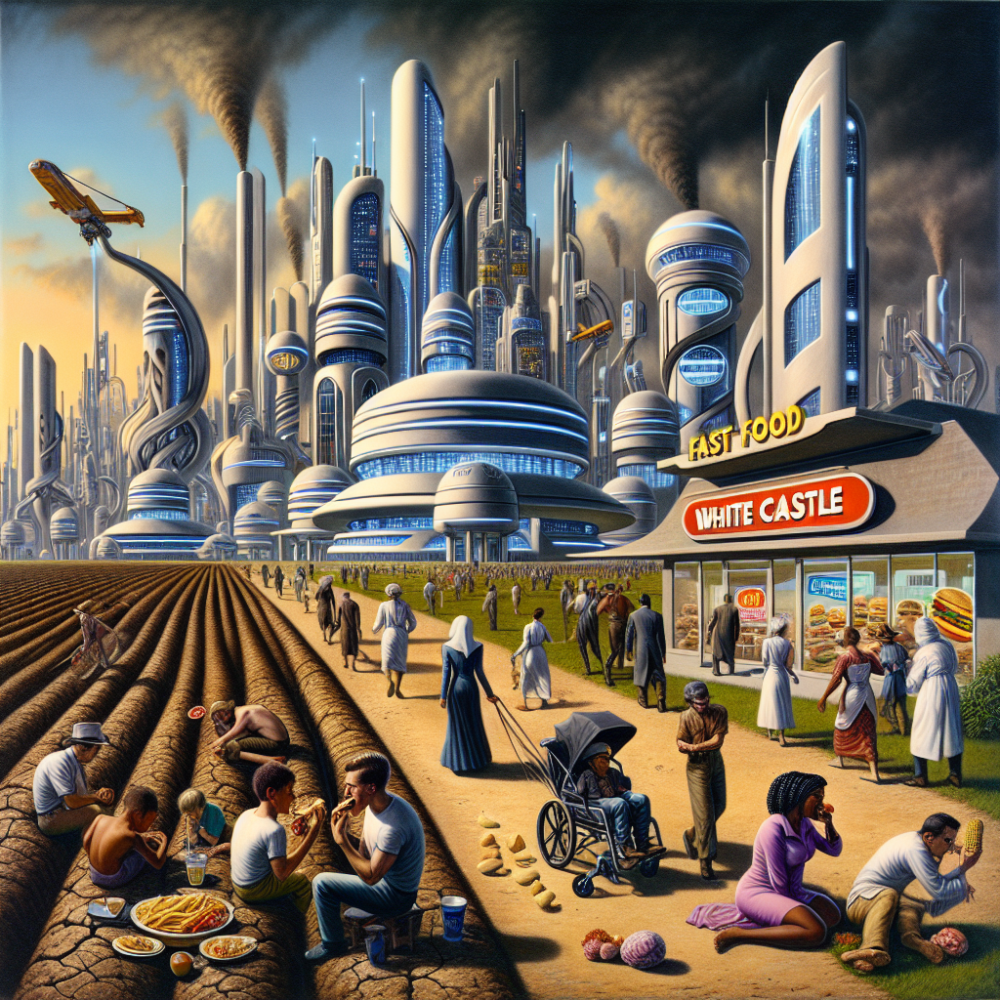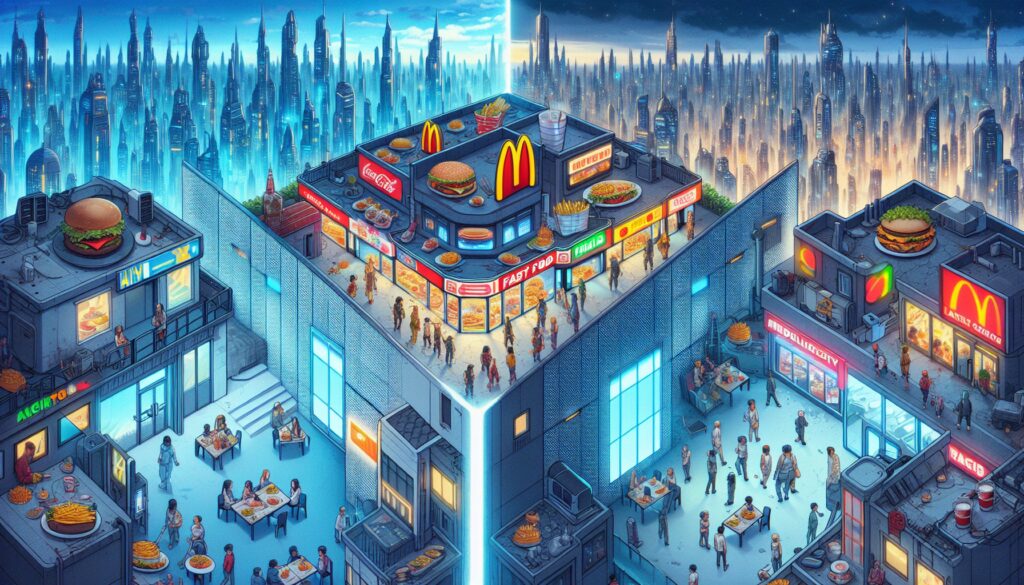The Medical Industry Scam
There’s a theory that the medical industry in the United States is a scam, profiting from people’s illnesses rather than addressing the root causes. Doctors often prescribe medication as a band-aid solution instead of focusing on factors like diet and sedentary lifestyle that contribute to poor health.
The Rise of Fast Food and Health Issues
Stomach and thyroid issues, which affect metabolism, have become increasingly common in the U.S., coinciding with the rise of fast food chains like White Castle in the 1920s and McDonald’s in the 1950s. This popularity may be due to the fast-paced lifestyle embraced by Americans post-World War II, particularly among the middle and lower classes.

The Wealth and Health Gap
The wealth gap in America may also be a health gap, with the elites benefiting from the post-World War I economic boom known as the Roaring Twenties. This disparity is captured in John Steinbeck’s novel “The Grapes of Wrath,” although many people opt for the movie adaptation rather than reading the 530-page book.
The Psychological Manipulation of Big Banks and Businesses
Big banks and businesses understand and exploit human psychology, acting as gatekeepers of human resources. They capitalize on people’s desire to avoid confronting their own pain and shame, as depicted in “The Grapes of Wrath.”
The Stock Market Crash and Dust Bowl
The elites’ prosperity came to a halt on October 29, 1929, known as Black Tuesday, when the stock market crashed. This was followed by the Dust Bowl, characterized by severe droughts and poor farming practices that depleted the soil, leading to erosion.
The Importance of Micronutrients and Access to Fresh Produce
During the Great Depression, people’s diets lacked micronutrients due to limited access to fresh fruits and vegetables. Low-income individuals still face this issue today, while even those with higher incomes sometimes choose not to consume these nutrient-rich foods.
Interesting facts:
– 🍔 The first White Castle restaurant opened in Wichita, Kansas, in 1921, selling hamburgers for just 5 cents each.
– 🌿 The Dust Bowl, which lasted from 1930 to 1936, was one of the worst environmental disasters in U.S. history, affecting over 100 million acres of land across the Great Plains.
– 🥗 According to a 2013 study, only 11.4% of adults in the U.S. met the recommended daily intake of fruits and vegetables.
The gold standard also plays a significant role in this discussion, but due to time constraints, the video ends before delving into this topic further.

